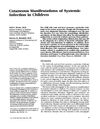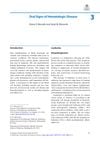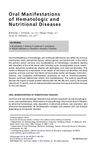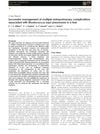Anaemia and Skin Disease
November 1970
in “
Postgraduate Medical Journal
”
telogen effluvium haemolytic anaemias sickle-cell anaemia eczema psoriasis normocytic anaemia megaloblastic anaemia microcytic anaemia dermatitis herpetiformis coeliac syndrome vitiligo alopecia areata pernicious anemia erythropoietic protoporphyria cytotoxic drugs dapsone sulphonamides hair loss skin diseases skin lesions
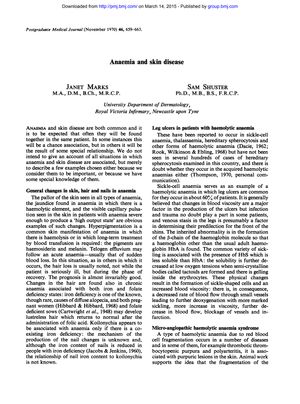
TLDR Some skin diseases and anaemia are related, and treating the skin condition can often improve the anaemia.
The 1970 document examines the connections between anaemia and skin diseases, noting that while they may co-occur by chance, there are cases where a special relationship exists. It describes how anaemia can cause general changes in skin, hair, and nails, including pallor, jaundice, hyperpigmentation, and hair loss through telogen effluvium. The paper highlights that leg ulcers are a complication in about 60% of patients with haemolytic anaemias like sickle-cell anaemia and that skin diseases such as eczema and psoriasis can lead to normocytic, megaloblastic, or microcytic anaemia. Treatment of the skin disease often improves the anaemia. The document also discusses the association of dermatitis herpetiformis with coeliac syndrome and anemia, the link between vitiligo and alopecia areata with pernicious anemia, and the role of erythropoietic protoporphyria in causing both skin lesions and hemolysis. It mentions anemia as a side effect of cytotoxic drugs for skin conditions and from treatments like dapsone or sulphonamides for dermatitis herpetiformis. The paper does not provide specific study participant numbers but references various studies and cases.
